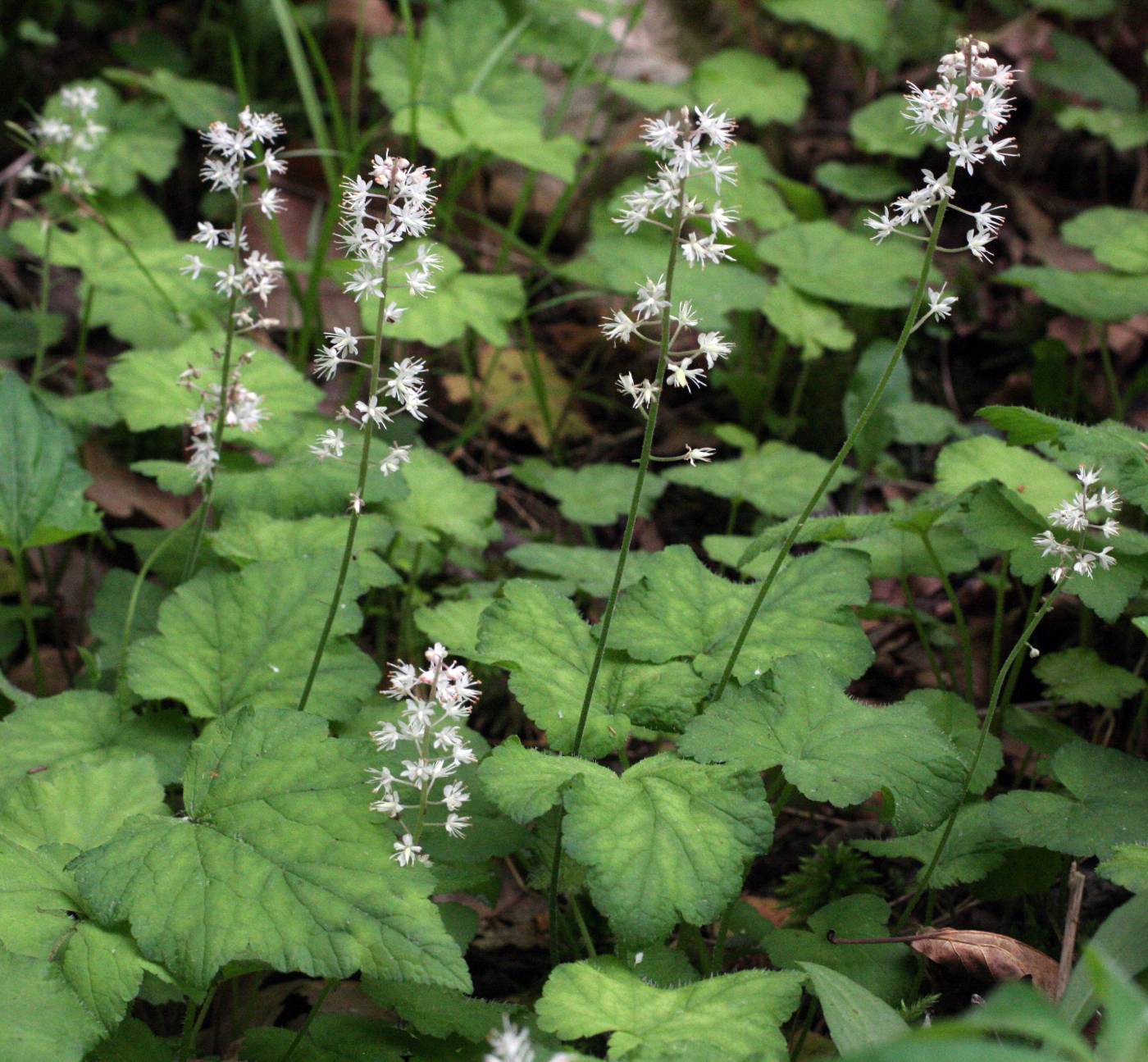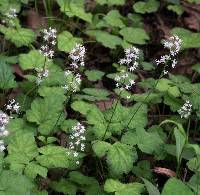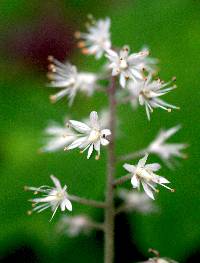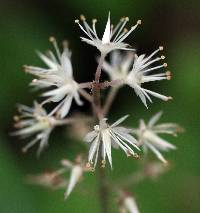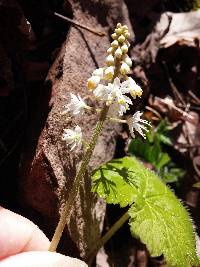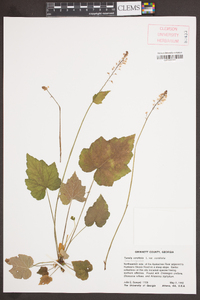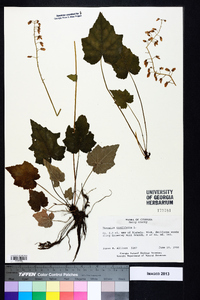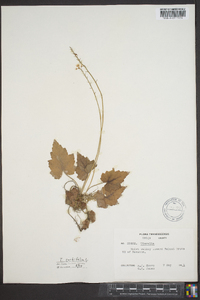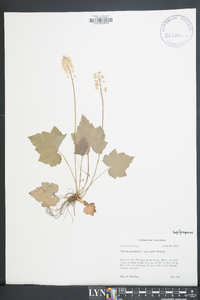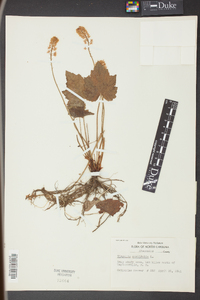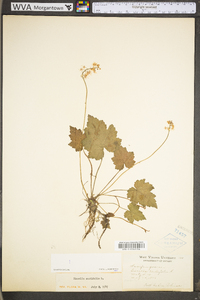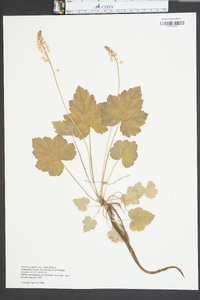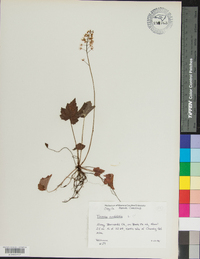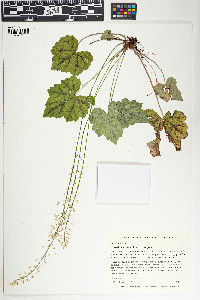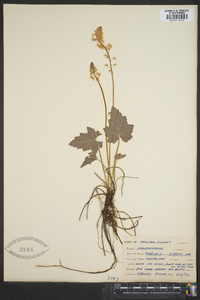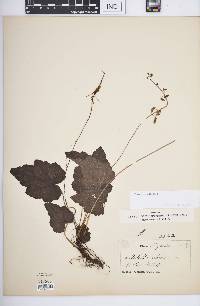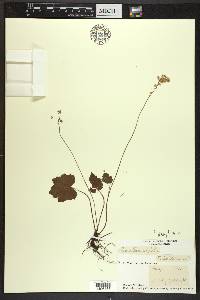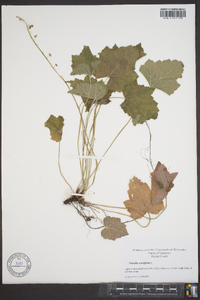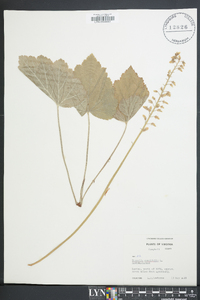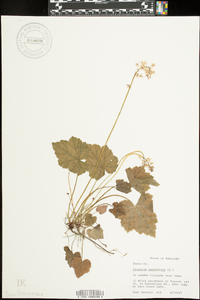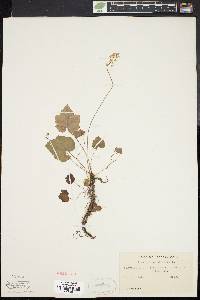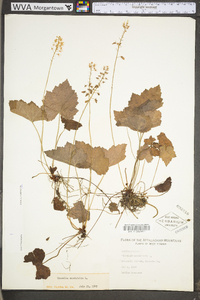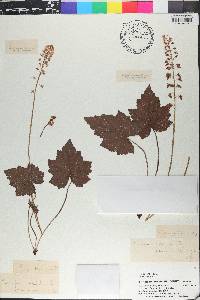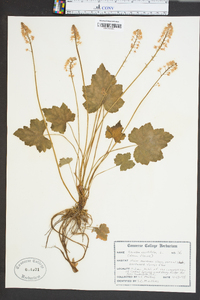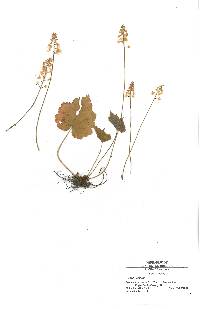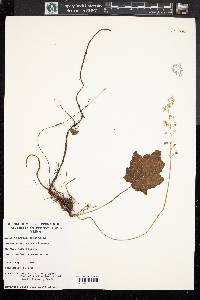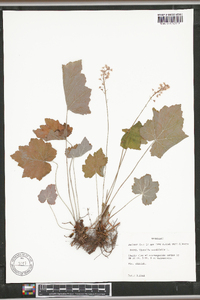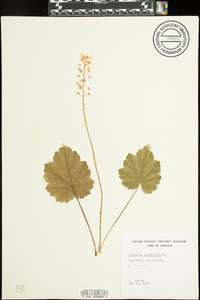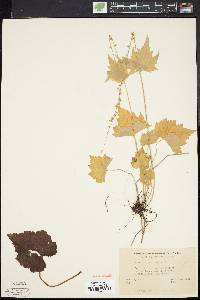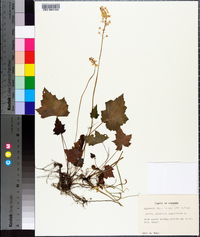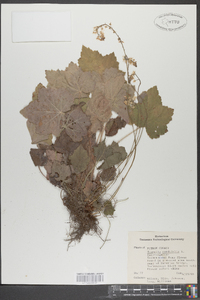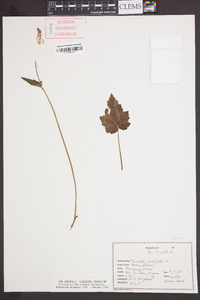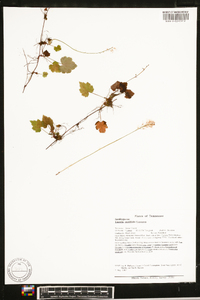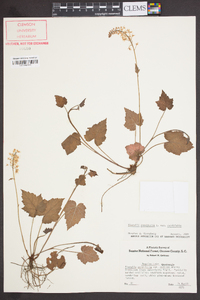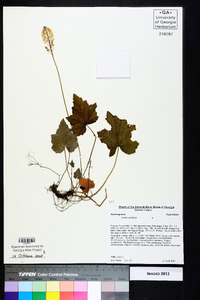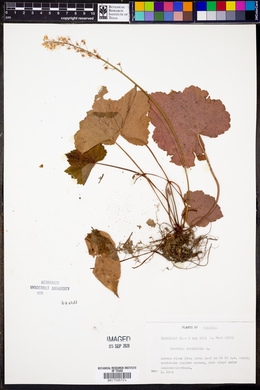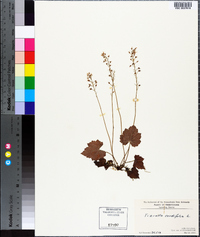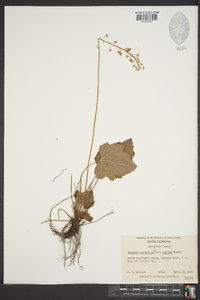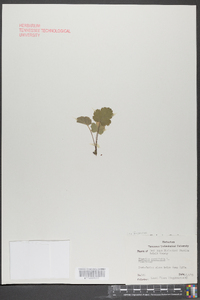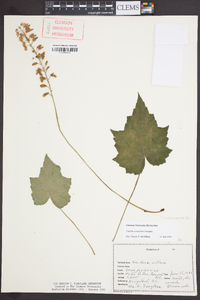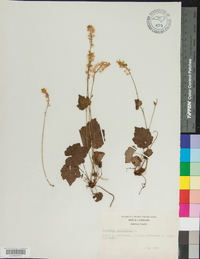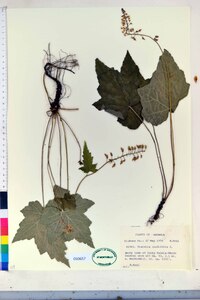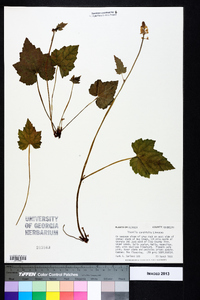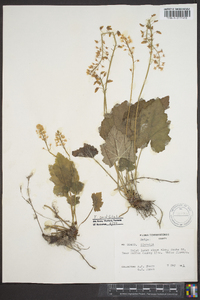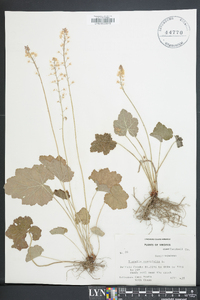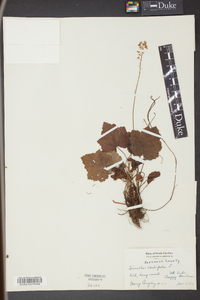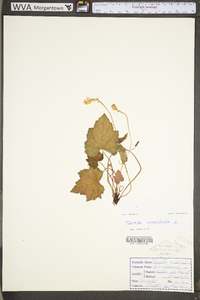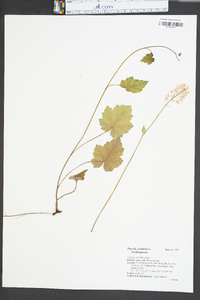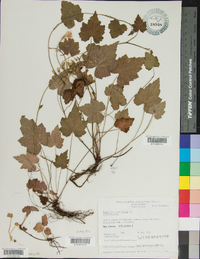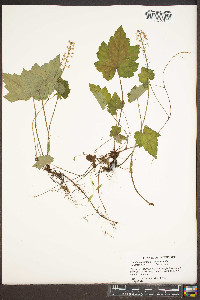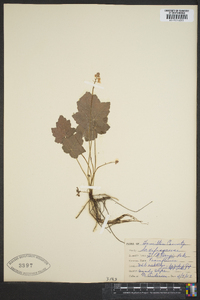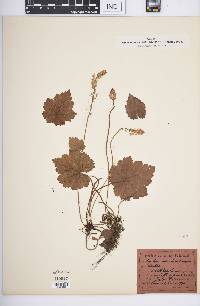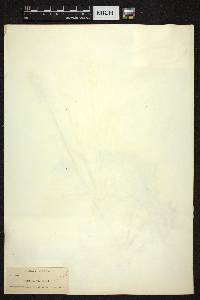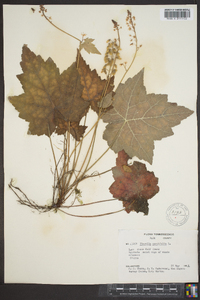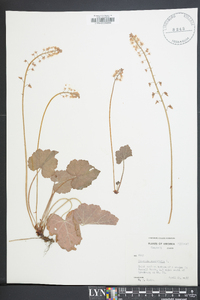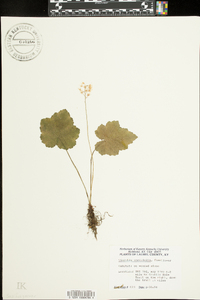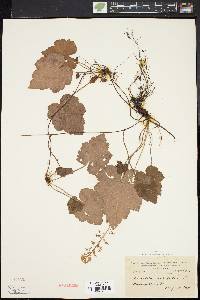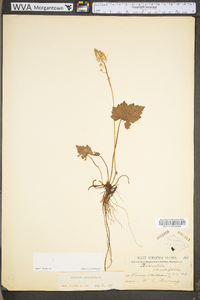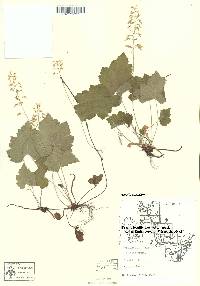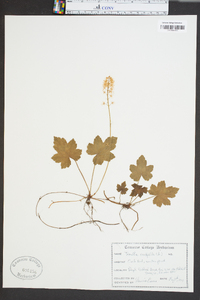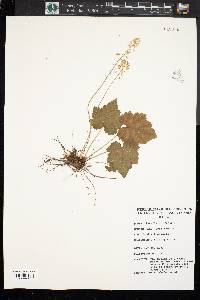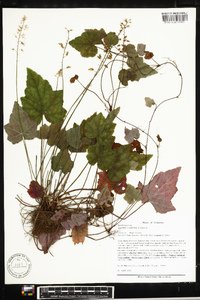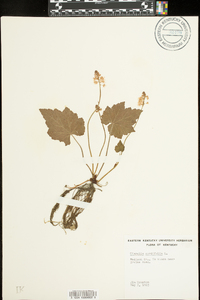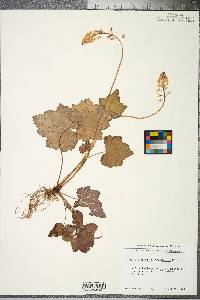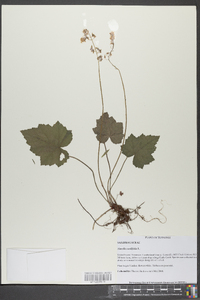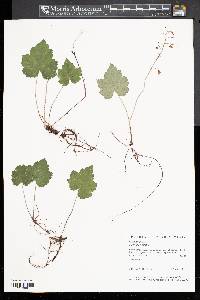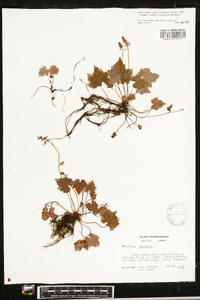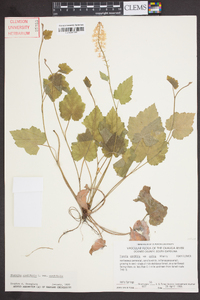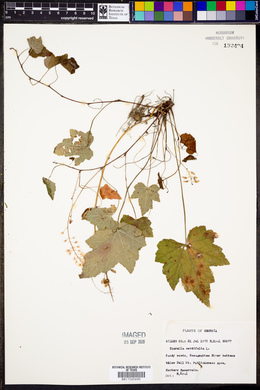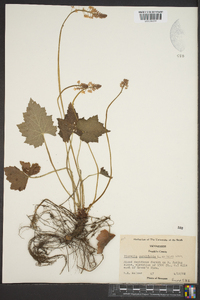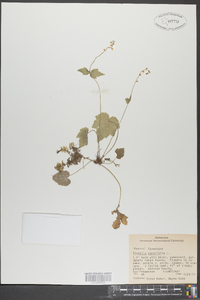Tiarella cordifolia
|
|
|
|
Family: Saxifragaceae
Heart-Leaf Foamflower
|
Flowering stems 15-40 cm. Leaves simple; cauline leaves absent or 1; petiole 0.2-2 dm; blade 3-13 × 3-10 cm. Inflorescences racemes, 15-50-flowered, 4-40 × 1-2 cm. Pedicels subtended by finely dissected bracts, 0.1-0.8 cm, glandular-stipitate. Flowers: hypanthium campanulate, 3-6 mm, glandular-stipitate; perianth radially symmetric; sepals spreading at anthesis, reflexed in fruit, 1.5-3.5 × 0.5-1 mm; petals caducous, spreading, oblanceolate to elliptic, unlobed, 0.6-1 × 3-4.5 mm, base clawed, apex 3-toothed; stamens equal, 2-6 mm; anthers oval, 0.3-0.5 mm. Capsules 0.5-1.1 cm. Seeds 4-15, ellipsoid, 0.9-1 × 0.4-0.7 mm. 2n = 14. Flowering Mar-Jul; fruiting Apr-Sep. Open and shady, dry to swampy deciduous woods, along streams; 40-800 m; N.B., N.S., Ont., Que.; Ala., Conn., Ga., Ky., Maine, Md., Mass., Mich., Minn., Miss., N.H., N.J., N.Y., N.C., Ohio, Pa., R.I., S.C., Tenn., Vt., Va., W.Va., Wis. Tiarella macrophylla was described from Tyron Mountain, North Carolina; the specimen consists of basal leaves of Heuchera villosa and racemes of T. cordifolia. Tiarella wherryi and T. cordifolia have been differentiated primarily on the basis of lack of stolons in T. wherryi. Such plants grow in mixed populations and it has been impossible to differentiate taxa on the basis of herbarium specimens. It is also thought that the differences between the taxa might be a result of altitudinal variation in habitat. Attempts by Lakela to distinguish var. cordifolia and var. austrina on the basis of leaf dimensions and marginal dentation have been thwarted by continuous variation in these characteristics.
Perennial herb 10 - 35 cm tall Leaves: basal, 5 - 10 cm long, broadly heart- to egg-shaped or nearly round, shallowly three- to five-lobed, toothed, slightly hairy above, downy beneath. Flowers: borne on an inflorescence (raceme) that is dense when young, later becoming open and reaching 15 cm in length, white or pinkish, having elliptic to egg-shaped sepals with a blunt tip and clawed petals 3 - 5 mm long. Fruit: a thin-walled capsule with two unequal valves, containing a few smooth, spherical seeds. Flowering stem: erect, leafless. Similar species: Heuchera americana and Heuchera richardsonii both have branched inflorescences (panicles) and flowers with five stamens and sepals that are more conspicuous than the petals and stamens. Each species of Mitella has flowers with pinnately fringed petals and an ovary that is somewhat flattened at the top. In addition, Mitella diphylla has two opposite leaves on the flowering stem, while Mitella nuda may have one. Sullivantia sullivantii has up to two leaves on the flowering stem, petals that wither but persist, a two-chambered ovary, and winged seeds. Flowering: April to May Habitat and ecology: The only voucher in the Chicago Region was collected in wet muck of an old forested glacial lake bottom in Berrien County. Occurence in the Chicago region: native Notes: This species has become a popular garden plant with many cultivars available. Etymology: Tiarella is a diminutive of the Greek word tiara, a small crown, referring to the pistil's form. Cordifolia means "heart-shaped leaves." Author: The Morton Arboretum Plants erect, 1-3.5 dm, usually with long stolons; basal lvs broadly cordate- ovate to subrotund, shallowly 3-5-lobed, crenate, sparsely hairy; raceme at first crowded, later to 1 dm; pedicels 5-10 mm; sep elliptic-obovate, 2-3.5 mm, blunt; pet 3-5 mm; fr thin-walled, the larger carpel 10 mm, the smaller one often only half as long; 2n=14. Rich woods; N.S. to Ont. and e. Wis., s. to Ga. and Ala. Spring. Var. collina Wherry (T. wherryi Lakela), without stolons, occurring n. as far as Ky. and
Va., is of doubtful status. Gleason, Henry A. & Cronquist, Arthur J. 1991. Manual of vascular plants of northeastern United States and adjacent Canada. lxxv + 910 pp. ©The New York Botanical Garden. All rights reserved. Used by permission. |
|
|
|

